Table of Contents
Caregiver Burnout

Introduction: Caregiver Burnout
Imagine pouring your heart and soul into your career, only to find yourself emotionally drained, physically exhausted, and financially strained. This is the harsh reality for many caregivers, a dedicated workforce facing a silent crisis. A recent study published in the Journal of the American Geriatrics Society revealed that over 60% of caregivers experience symptoms of Caregiver Burnout, a state of emotional, physical, and mental exhaustion caused by prolonged caregiving stress.
Background: As the global population ages, the demand for qualified caregivers is skyrocketing. According to the World Health Organization, the number of people aged 60 and over is expected to reach 2 billion by 2050. This surge translates to a growing need for long-term care services, placing immense pressure on the caregiving workforce.
Thesis Statement: While caregiving is a noble profession filled with compassion and dedication, it’s crucial to acknowledge the significant toll it can take on caregivers’ well-being. This article will delve into the negative impacts of caregiving as a career, exploring the emotional, physical, and financial consequences these essential workers face. We will examine the constant emotional strain, the potential for bodily injuries and health problems, and the often-meager financial realities associated with caregiving. By understanding these challenges, we can work towards creating a more supportive system for caregivers, ensuring they have the resources and support they need to thrive both personally and professionally.
The Emotional Toll of Caregiving: A Battlefield of the Heart
Caregiving, while a rewarding profession, can feel like an emotional battlefield. Caregivers face a constant barrage of pressures that take a significant toll on their mental and emotional well-being. Let’s explore some key emotional challenges contributing to Caregiver Burnout.
- Stress and Anxiety: Under the Weight of Responsibility: Caregivers often juggle complex medical needs, challenging behaviors, and the constant worry about their patient’s well-being. This relentless pressure can lead to chronic stress and anxiety, impacting their ability to cope and relax. Imagine the emotional strain of managing medications, ensuring safety, and anticipating potential health emergencies – a weight that can feel heavy and ever-present.
- Compassion Fatigue: From Empathy to Exhaustion: The core of caregiving – empathy and compassion can become a double-edged sword. Prolonged exposure to the suffering of others can lead to Caregiver Burnout, a state of emotional exhaustion. Caregivers may experience feelings of detachment, cynicism, and a sense of helplessness, hindering their ability to provide the emotional support their patients need.
- Secondary Traumatic Stress: Sharing the Scars of Others: A lesser-known phenomenon, secondary traumatic stress, can affect caregivers. Witnessing trauma, grief, and loss experienced by their patients can lead caregivers to develop similar emotional and psychological symptoms. It’s as if they carry the emotional burden of their patients, adding another layer of complexity to the emotional toll of caregiving.
- Isolation and Loneliness: The Price of Dedication: The demanding schedules and emotional intensity of caregiving can lead to social isolation. Caregivers may withdraw from friends and family due to limited time or difficulty sharing the emotional weight of their experiences. This isolation can exacerbate feelings of loneliness and further contribute to Caregiver Burnout.
These emotional challenges paint a stark picture of the unseen battles caregivers face. Recognizing these burdens is the first step towards creating a more supportive system, offering resources and strategies to help caregivers manage stress, prevent burnout, and prioritize their emotional well-being.

The Physical Toll of Caregiving: A Body Pushed to the Limit
The dedication of caregivers often comes at a physical cost. The demanding nature of caregiving can take a significant toll on their bodies, leading to many health problems. Let’s explore some of the key physical impacts of caregiving and their connection to Caregiver Burnout.
- Musculoskeletal Issues: Aching Backs and Weary Muscles: Caregiving often involves repetitive tasks like lifting, transferring, and assisting with mobility. Over time, these physically demanding activities can lead to back pain, muscle strain, and injuries. The constant physical exertion can also contribute to fatigue, making it even harder for caregivers to maintain their energy levels throughout the day. Imagine the physical toll of supporting someone’s weight or maneuvering them into different positions – a strain accumulating daily.
- Sleep Deprivation: Stolen Nights and Fragmented Rest: The unpredictable nature of caregiving needs can wreak havoc on sleep patterns. Caregivers may experience disrupted sleep due to nighttime assistance, worries about their patients, or the emotional stress lingering after a long day. Chronic sleep deprivation has a significant impact on physical health, leading to fatigue, weakened immune function, and difficulty concentrating. This lack of quality rest further contributes to Caregiver Burnout, creating a vicious cycle that can be hard to break.
- Weakened Immune System: Living on the Frontlines of Illness: Caregivers are constantly exposed to various pathogens, putting them at a higher risk of contracting illnesses. This is especially true when caring for individuals with compromised immune systems or chronic health conditions. Frequent illnesses impact the caregiver’s physical well-being and add stress and strain to an already demanding job.
- Increased Risk of Chronic Diseases: Research suggests a link between long-term caregiving and an increased risk of developing chronic health conditions like heart disease, high blood pressure, and diabetes. The constant stress, sleep deprivation, and unhealthy lifestyle choices often associated with caregiving can contribute to these long-term health problems.
These physical repercussions highlight the importance of self-care for caregivers. Prioritizing healthy sleep habits, incorporating physical activity, and maintaining a balanced diet are crucial for preventing injuries, boosting the immune system, and managing stress. By addressing the physical toll of caregiving, we can help caregivers stay healthy and better equipped to navigate the challenges of their profession.
The Financial Squeeze: When Dedication Doesn’t Pay the Bills
Caregiving is a profession filled with compassion, but the financial reality it presents can be harsh. The dedication required often comes at a significant cost, pushing caregivers to make difficult financial choices that can exacerbate the stress of Caregiver Burnout. Let’s delve into the economic challenges caregivers face.
- Low Wages and Meager Benefits: Caregiving jobs are often characterized by low wages and limited benefits. This can create financial strain, making it difficult for caregivers to afford basic necessities and healthcare costs or save for the future. The low pay can also contribute to feelings of undervaluing and lack of recognition for caregivers’ vital role. Imagine devoting yourself to someone’s well-being yet struggling to make ends meet – a situation that can breed frustration and resentment.
- Limited Career Advancement: The caregiving field often offers limited career growth and professional development opportunities. This lack of upward mobility can be discouraging for caregivers who may aspire to advance their skills and knowledge. Stagnant wages and limited career paths can fuel feelings of stagnation and contribute to Caregiver Burnout.
- Reduced Earning Potential: Many caregivers are forced to make financial sacrifices to meet the demands of their jobs. This may involve reducing work hours, leaving the workforce entirely, or foregoing opportunities for higher-paying careers. The loss of potential income creates additional financial pressure and can significantly impact a caregiver’s long-term financial security. Imagine a caregiver choosing between caring for a loved one and their financial well-being – a heartbreaking dilemma with lasting consequences.
- Out-of-Pocket Expenses: The financial burden of caregiving can extend beyond wages. Caregivers may incur additional costs for training, special equipment needed for patient care, or transportation to appointments and facilities. These unexpected expenses can further strain already tight budgets and contribute to feelings of financial stress.
These financial realities paint a concerning picture for the caregiving workforce. Addressing these challenges through better wages, improved benefits, and financial assistance programs is crucial for attracting and retaining qualified caregivers. By creating a more financially secure environment for caregivers, we can help them focus on providing quality care without worrying about financial instability.
Building Resilience: Tools and Support for Caregiver Well-being

The demanding nature of caregiving necessitates a proactive approach to self-care and utilizing available support systems. By prioritizing their well-being, caregivers can build resilience against Caregiver Burnout and continue to provide quality care with compassion and dedication.
- Self-care Strategies: Making Time for You: Caregivers often put the needs of others before their own. However, prioritizing self-care is not a luxury – it’s a necessity. Stress management techniques like deep breathing exercises, mindfulness meditation, or gentle yoga can help manage stress and promote relaxation. Maintaining a healthy diet, regular exercise, and ensuring adequate sleep are crucial for physical and mental well-being. Imagine carving out dedicated time for a walk in nature, a relaxing bath, or a phone call with a friend – these seemingly small acts of self-care can recharge caregivers and allow them to return to their duties with renewed energy.
- Respite Care: A Lifeline for Relief: Respite care provides temporary relief for caregivers, allowing them time to rest, recharge, and attend to their needs. This can involve in-home care services, adult daycare programs, or short-term stays in assisted living facilities. Respite care is not a sign of weakness but rather a vital tool for preventing Caregiver Burnout and ensuring caregivers can continue providing quality care in the long run. Imagine the difference a few hours of respite care can make – a chance to catch up on sleep, run errands, or simply de-stress.
- Employee Assistance Programs (EAPs): Support Within the Workplace: Many workplaces offer Employee Assistance Programs (EAPs) that provide confidential counseling, resources, and support for employees facing personal challenges, including Caregiver Burnout. Caregivers should explore these programs and utilize the available mental health services to manage stress, develop coping mechanisms, and learn strategies for balancing work and personal life. Imagine having access to a therapist or counselor who understands the unique challenges of caregiving and can offer personalized support.
- Advocacy for Change: A Collective Voice for a Better Future: Caregivers have a powerful voice to advocate for change. By joining support groups, lobbying for better working conditions, and raising awareness about Caregiver Burnout, caregivers can work towards a more supportive caregiving environment. This advocacy can push for better wages, improved benefits, and additional caregiver support services. Imagine a future where caregiving is valued and respected, with adequate resources available to help caregivers thrive personally and professionally.
Building resilience requires a multi-faceted approach. By actively incorporating self-care strategies, utilizing available support systems, and advocating for change, caregivers can navigate the challenges of their profession and create a sustainable path for their well-being.
Conclusion: A Brighter Future for Caregivers
The journey of a caregiver is not for the faint of heart. This article has shed light on the significant negative impacts of caregiving as a career, highlighting the emotional toll, physical strain, and financial challenges caregivers face. Caregiver Burnout is a real and substantial threat, jeopardizing the well-being of caregivers and ultimately impacting the quality of care provided.
We cannot afford to disregard the silent crisis caregivers face. Improved working conditions, with higher wages, better benefits, and opportunities for professional development, are essential for attracting and retaining a qualified caregiving workforce. Greater recognition of caregivers’ invaluable role in society is crucial for boosting morale and preventing burnout. Investment in innovative solutions, such as technology-assisted care and expanded respite care options, can offer additional support and alleviate some burdens caregivers shoulder.
Future Outlook: The future of caregiving holds promise for advancements that can ease the strain on caregivers. Technological innovations like wearable health monitors and robotic assistance devices can streamline care tasks and improve safety. Policy changes promoting flexible work arrangements and financial assistance programs can support caregivers juggling work and personal life. Investing in research on Caregiver Burnout and developing effective prevention strategies can create a more sustainable future for the caregiving profession.
The Essential Role of Caregivers: Despite the challenges, caregivers are the heart and soul of long-term care. Their dedication, compassion, and tireless efforts play a vital role in ensuring the well-being of our most vulnerable populations. Investing in their well-being is not just an ethical imperative; it’s a practical necessity for building a strong and sustainable caregiving system.
A Note to Nursing Students: As you embark on your journey in the healthcare field, consider the vital role caregivers play. Nursingpapers.com [This is where I would remove the link due to our guidelines] offers a wealth of resources on various aspects of nursing, including geriatrics and long-term care. By understanding caregivers’ challenges, you can become a more informed and compassionate healthcare professional, working alongside caregivers to create a future where both patients and caregivers can thrive.
Let’s work together and learn at nursingpapers to build a future where caregiving is a rewarding and sustainable career path that fosters caregivers’ and individuals’ well-being.







